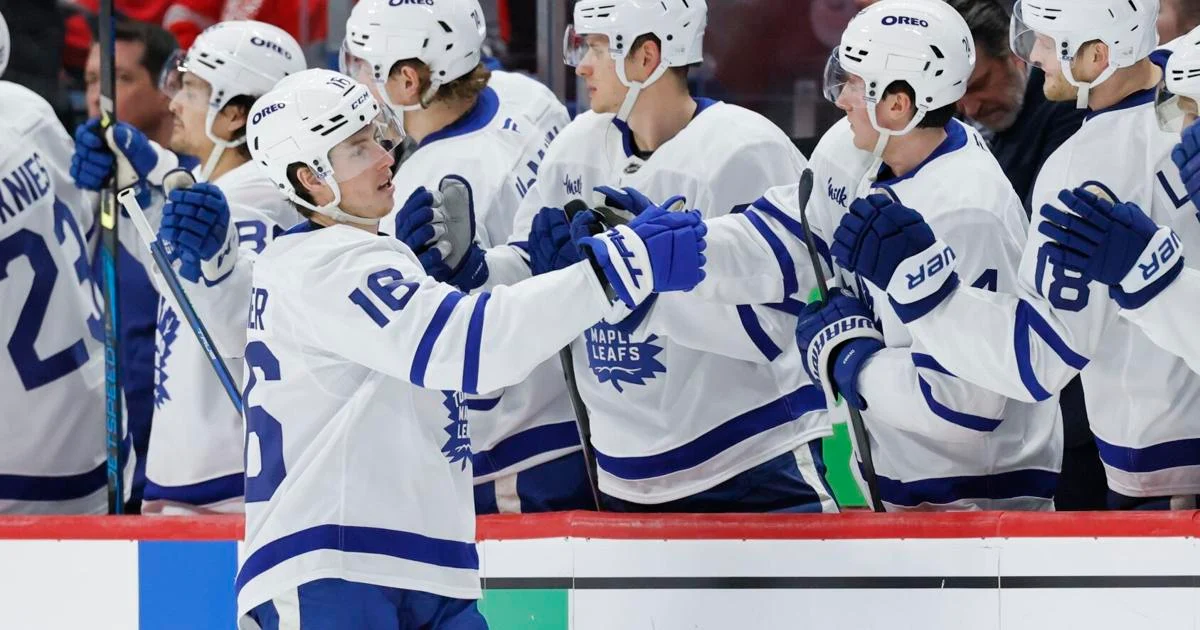
In a perfect world, Montreal Canadiens general manager Kent Hughes would be able to trade Josh Anderson and the three seasons he has left at $5.5 million per, after having acquired Patrik Laine. However, even as Hughes has made great strides realizing his own offensively-inclined perfect world that he envisioned upon getting hired, hiccups remain.
Laine vs. Anderson
For example, Anderson, who would have had a good chance of playing on the Canadiens’ second line had Laine not been acquired, would only have been deployed there to salvage something out of his deal. After an underwhelming nine-goal, 20-point season, playing Anderson with centre Kirby Dach, who has shown a capacity to make his linemates better, made sense.
However, Laine is now in the picture. Considering his skill set, it’s hard to envision the offense-first Finn anywhere else but at the top of the lineup (with the first line of Nick Suzuki, Cole Caufield and Juraj Slafkovsky all but confirmed officially). So, there’s really no room for Anderson, unless the Canadiens are resigned to handicapping themselves from a cap-management standpoint and playing a forward with a $5.5 million cap hit in a bottom-six role, with low offensive expectations.
Unfortunately, all 31 other GMs have eyes. They see Anderson has been struggling. They’re unlikely to take on a costly player with such limited dimensions to his offensive game. Sure, if you see defenseman Jordan Harris, who went back to the Columbus Blue Jackets, as the compensation for Laine, they effectively paid the Canadiens a second-round pick to take on the question mark of a forward (who has an $8.7 million hit). So, in theory, it is possible.
However, Laine and Anderson are apples and orange. The 26-year-old Laine has the capacity to score a point per game. Anderson, at Age 30, has never scored more than 32 points with the Habs. Translation: No one’s taking him.
And, if no one’s taking Anderson, Hughes’ focus must shift elsewhere. Because, ultimately, the Canadiens just added one more forward to an already jam-packed situation up front. It isn’t even the $8.7 million hit that should be the main concern. As Habs beat writer Marco D’Amico noted, they have ways to address that, ahead of goalie Carey Price going on long-term injured reserve to start the season, thus taking his $10.5 million hit out of the equation
Dach Between Laine and Who?
As alluded to, it’s more so the one less available roster spot up front that Laine represents. Looking at it another way, Laine affords the Canadiens the opportunity to spread the offensive wealth across the lineup to a greater extent. Assuming you’re not going to put all your big-bodied eggs in one basket either by playing Anderson (6-foot-3, 224 pounds) with Laine (6-foot-5, 215) and Dach (6-foot-4, 217), that leaves the Habs with two realistic alternatives: Alex Newhook and Joshua Roy.
Putting Newhook at centre, where he filled in admirably for an injured Dach last season, on the third line would be one way to spread that aforementioned offensive wealth. Putting Roy on that second line with Dach and Laine would be a way to meanwhile put the prospect in the best position to succeed, with his defensive positioning, “skill in transition, great vision… and nose for the net,” per Montreal Hockey Now’s Marc Dumont. His and Dach’s defensive capabilities should also help offset Laine’s offense-only leanings very well, putting Laine in the best position to succeed himself. This just might work rather perfectly.
Unfortunately, there is a cog in this plan by the name of Christian Dvorak. Laine exacerbates the Dvorak conundrum Hughes faces, whereby injuries, including to the centre in question, have forced the Canadiens to look for redundancies down the middle. The end result is there’s no longer a place for Dvorak himself in the lineup if everyone else is healthy.
Revisiting the Dvorak Conundrum
To be crystal clear, Dvorak isn’t a bad player. It’s that, at $4.45 million per year, in his last year under contract, he doesn’t figure into the team’s long-term plans, especially to only play a bottom-six role, when he had been acquired by ex-GM Marc Bergevin to be the team’s No. 2 centre. He’s since been usurped by Dach (when healthy), Newhook (in principle) and perhaps even Jake Evans, a fellow pending-unrestricted free agent, who scored 28 points last season in an increased role.
Maybe the Canadiens don’t trade Dvorak. Maybe they trade Evans and his more digestible $1.7 million hit instead. Maybe that means a 2013-14 London Knights reunion with Anderson on the fourth line, which could be a “thing.”
After all, Anderson and Newhook have played together before with less-than-stellar results. So, Anderson would have to go on that hypothetical fourth line, and, if he already has a $5.5 million cap hit, you probably don’t want Dvorak’s $4.45 million tacked on as well. Seeing as the latter is simply more marketable than Anderson as a faceoff-capable centre with one year left under contract, he’s the logical odd man out here, assuming Hughes can find a taker.
Someone must be. Rafael Harvey-Pinard may be injured to start the season. However, you’re still looking at eight names comprising the bottom six: Anderson, Dvorak, Evans, Newhook/Roy, Joel Armia, Alex Barre-Boulet/Emil Heineman, Brendan Gallagher and Michael Pezzetta (not including Harvey-Pinard when he does return).
Ultimately acquiring a top-six forward like Laine is a luxury. In contrast, losing a forward had been an offseason priority before. Now, without a forward having gone back to the Jackets, it’s much more of one. It’s actually the only remaining one. Hughes must see that. And, with so much time remaining in the offseason, Hughes should have plenty of time to see it through. It’s fair to say his vision up to this point has been pretty spot-on.



-1724662853-q80.webp)